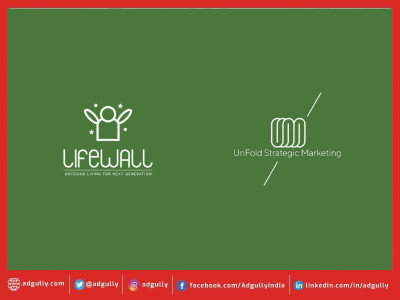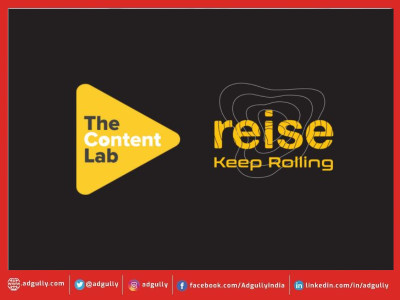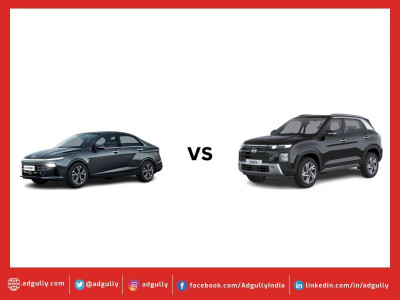2021 sailed particularly well for the FMCG industry: Krishnarao Buddha
With the year drawing to a close, Adgully has been doing a recap of all the major developments across M&E, Advertising, Digital, Marketing, Print, Television, PR & Communications along with leading names in the industry as part of the annual REWIND 2021 series.
As opposed to the severe disruptions brought about by the global COVID-19 pandemic in 2020, the year 2021 has been more about resilience and rebuilding.
In conversation with Adgully, Krishnarao Buddha, Senior Category Head at Parle Products, recaps the trends and developments that dominated the Indian FMCG sector during 2021. He also shares his projections and expectations for 2022.
Performance & key developments in the FMCG sector in 2021
The year 2021 sailed particularly well for the FMCG industry with initial challenges in the second wave in the months of April -May, which impacted certain categories under FMCG, but the remaining year has been superb, especially for food categories. Even with restrictions in place, the food category was seen dominating on both offline as well as online fronts. E-commerce has grown in large strides because of the lockdown restrictions. Today, consumers are open to shopping not just non-essentials, but also essential items from e-commerce platforms. Offline stores have also done extremely well, mom-and-pop stores have driven the overall FMCG business in this time.
Another key development also includes direct-to-consumer (D2C) channels, which have grown tremendously during the pandemic and companies have been trying to reach consumers as easily as possible, irrespective of the small ticket size challenges in FMCG.
There has also been an increase in the number of players who have been trying to service instant deliveries, for instance, players like Swiggy and Zomato, who have tried to ship groceries at a shorter notice and key turnaround time.
Dominating trends during 2021
The restriction of staying in the confines of our homes, which for some people was comfortable but caused inconvenience to many others, spurred a shift towards e-commerce. More and more people have been shopping online for all kinds of needs. The remote-working normal also witnessed a huge rise in digital consumption, which was high in volume given the time frame. Whether it is OTT, social media, digital media sharing platforms or knowledge sharing platforms – each and every space has seen more content sharing than pre-pandemic period.
Increased consumption-led growth, catalysed by the hybrid model of work, is another major trend that we saw in 2021. During the festival seasons, the recovery period started and consumers started coming back to normal consumption routines. All in all, a combination of all these factors led to a growth in the market for FMCG products.
Projections & expectations from 2022
We are expecting the categories in the food sector to expand significantly. In terms of consumption, we have seen an upward growth from 2020, more so with the pandemic. Therefore, next year we expect it to grow at a significant rate. For certain segments like salty snacks, which have lesser market penetration of about 70-75%, we are forecasting a greater interest and sale in 2022. Likewise, we are also expecting demand for confectionery to be high. Most schools are on the verge of opening and if all goes well, they may operate in normalcy. In that case, we expect the demand for confectionery, chocolates and salty snacks to rise outside home; since during general school going routines, children tend to make impulse purchases on these food items.
Apart from that, we are expecting 2022 to be a year of unique launches. Due to the uncertain period since the pandemic, a lot of companies postponed their new launches, hence, we can expect many new and innovative products to be rolled out in different categories such as bakery, confectionery and salty snacks.
Key trends that will dominate in 2022
One of the key trends that we expect to dominate in 2022 is that of media consumption. The 5G technology, initially slated to be launched in 2021 but postponed to 2022, will finally be rolled out. Once these most awaited licenses are given out, we can expect a lot more traction on all kinds of digital platforms over television with fresh and high quality content brewing.
Secondly, consumption and buying behaviours shall be skewed towards e-commerce. While modern trade will continue to grow and consolidate, a lot of traction is expected to happen online with a strong build-up in e-commerce with faster speed and better connectivity.
With the hybrid model of work, many white collar executives are working from their hometowns, which has led to reduction in expenses leading to increased purchasing power. This enables a higher consumption for a good percentage of people and shall be reflected in the demand for FMCG products.
The pandemic has also heightened the call of ‘vocal for local’ at the national level. Hence, a consolidated consumption led growth is set to take place. In terms of infrastructure as well, we are experiencing a huge amount of progress. The government has also introduced initiatives to focus on increasing the income for farmers. Therefore, once everything is open in full swing, earnings are expected to rise, especially for the farmers.
In the light of the above, we can conclude that an increase in demand and consumption owing to increase in purchasing power parity in different sectors is expected to make 2022 the year of mass recovery for all industries. There are good chances for economic growth to come at par with the pre-pandemic times.


















Share
Facebook
YouTube
Tweet
Twitter
LinkedIn